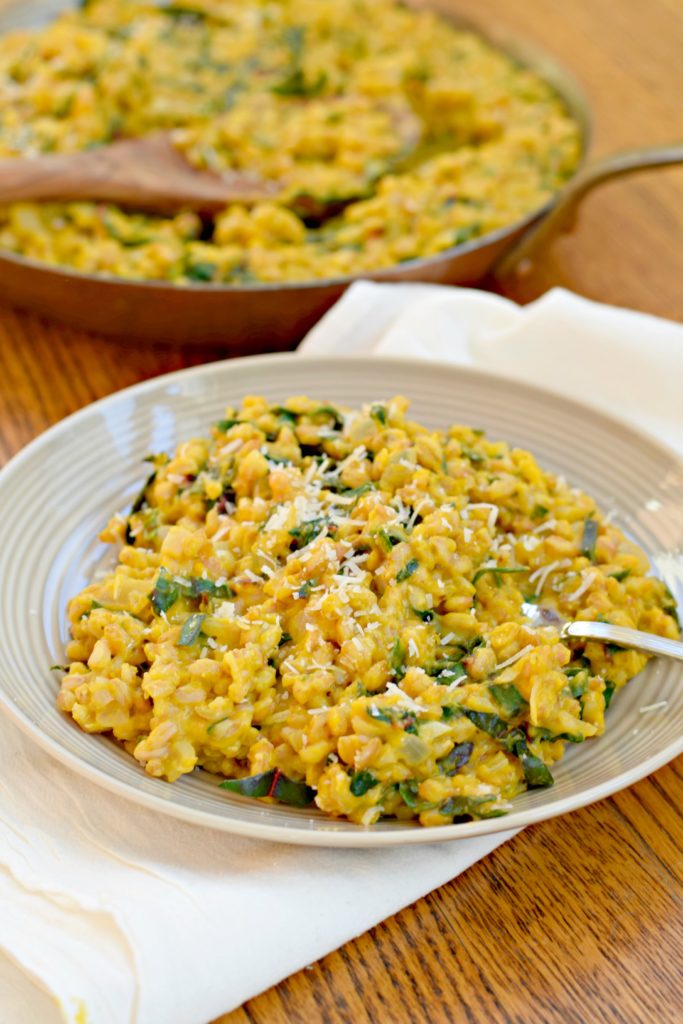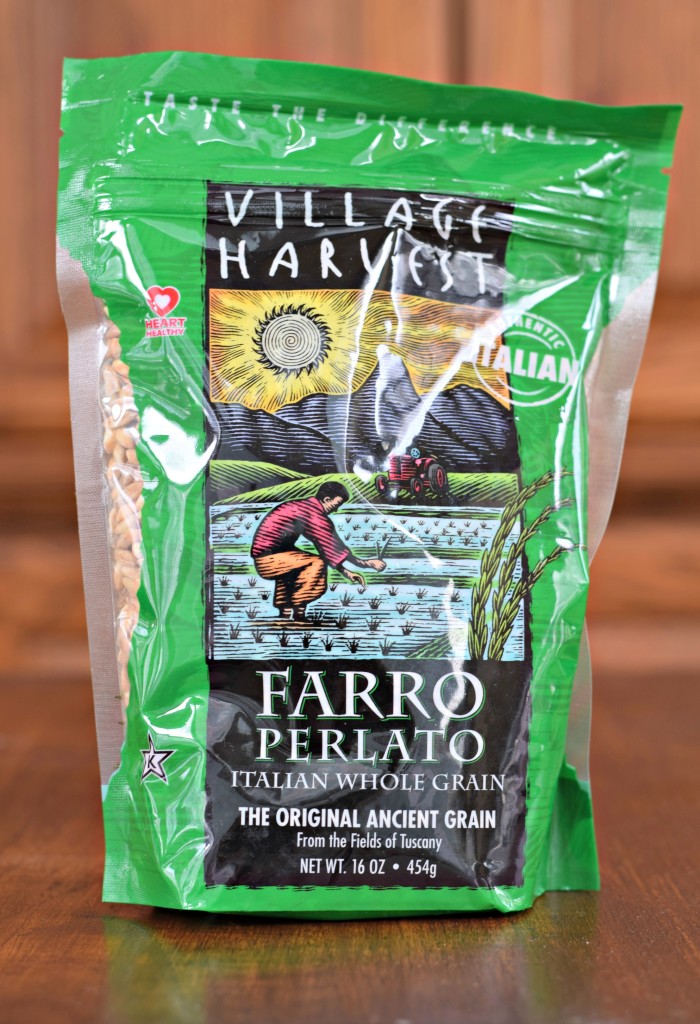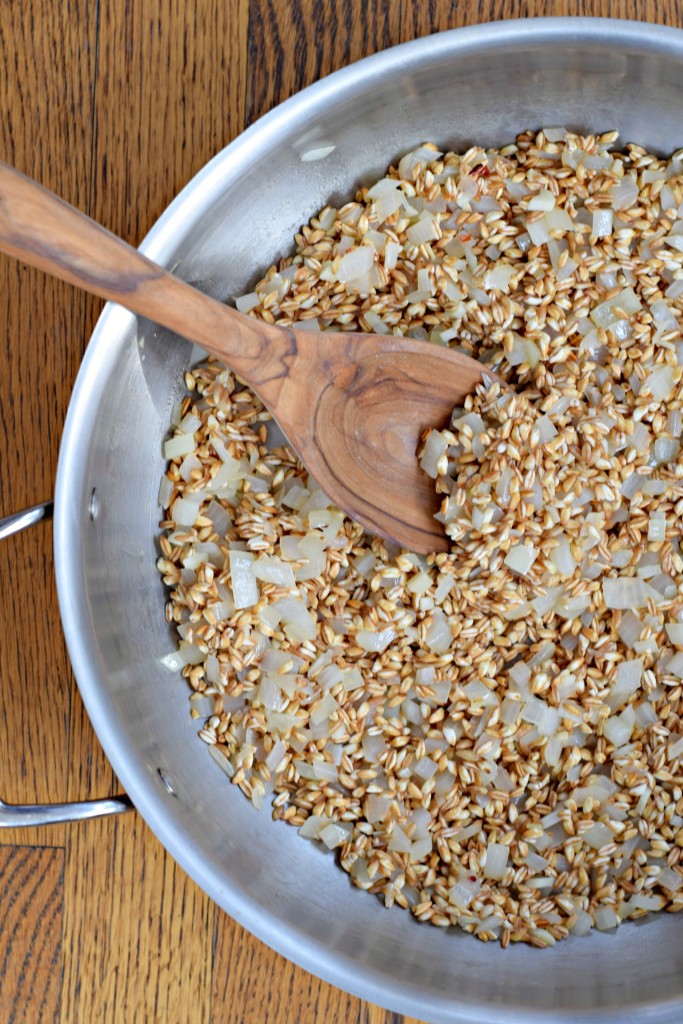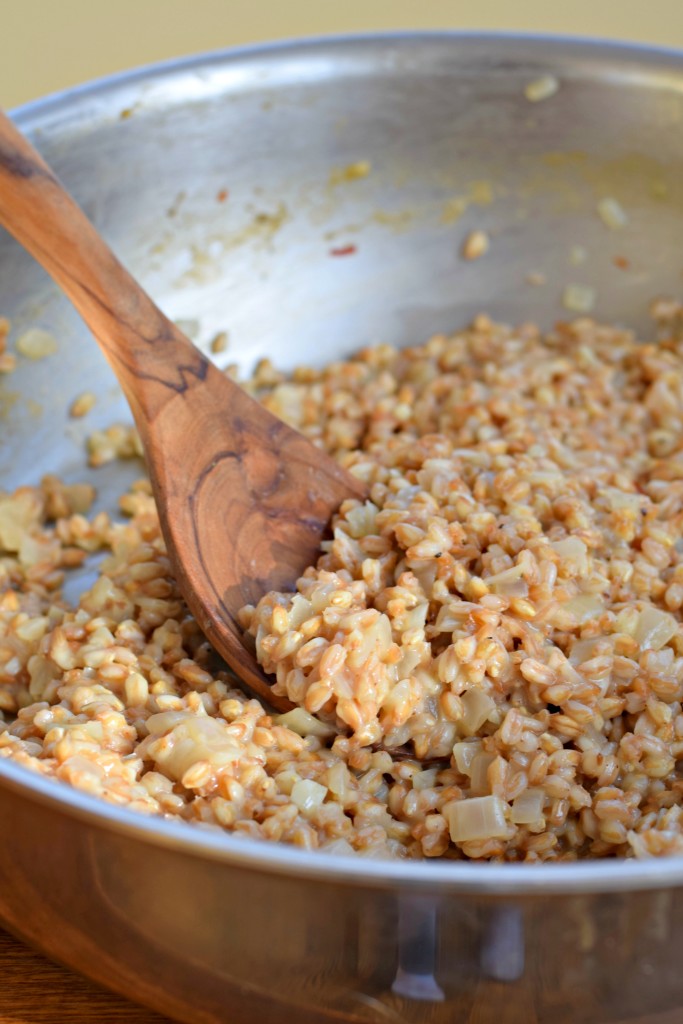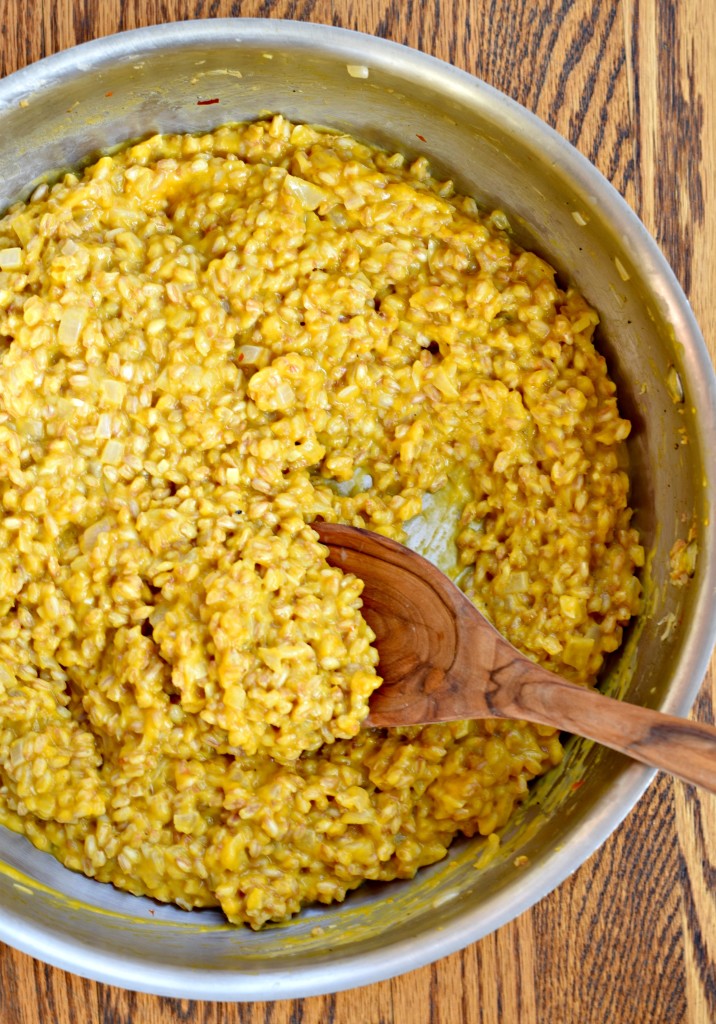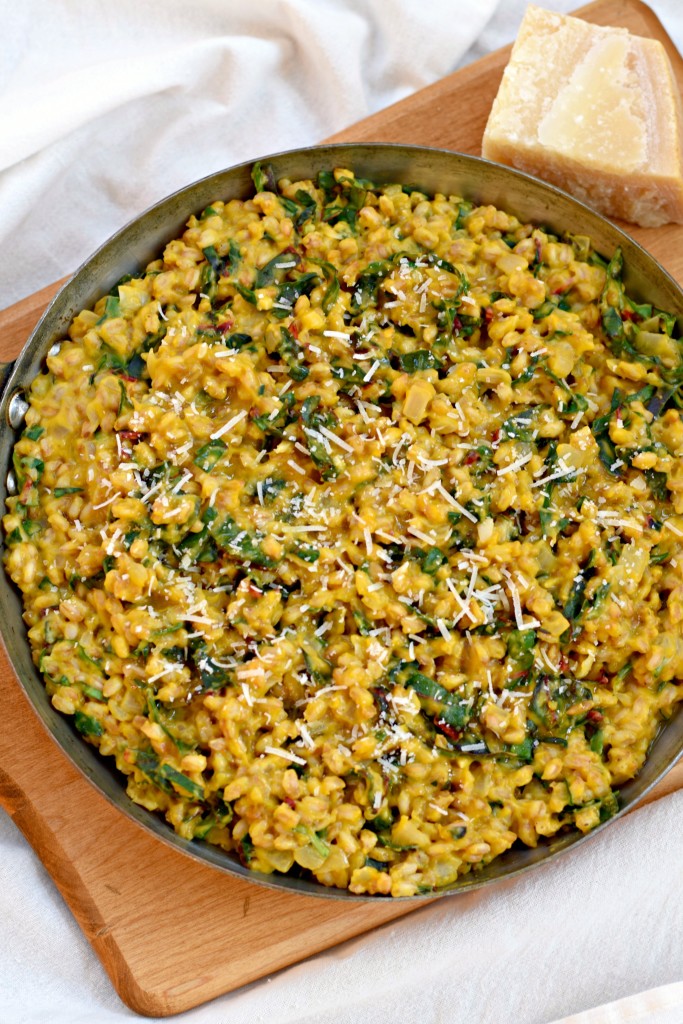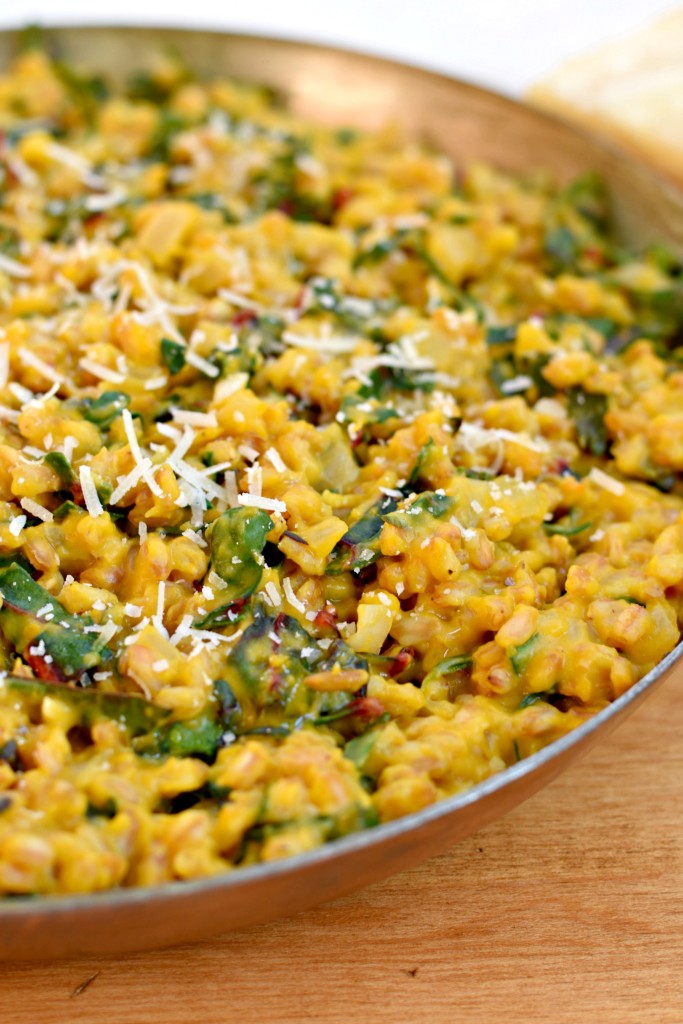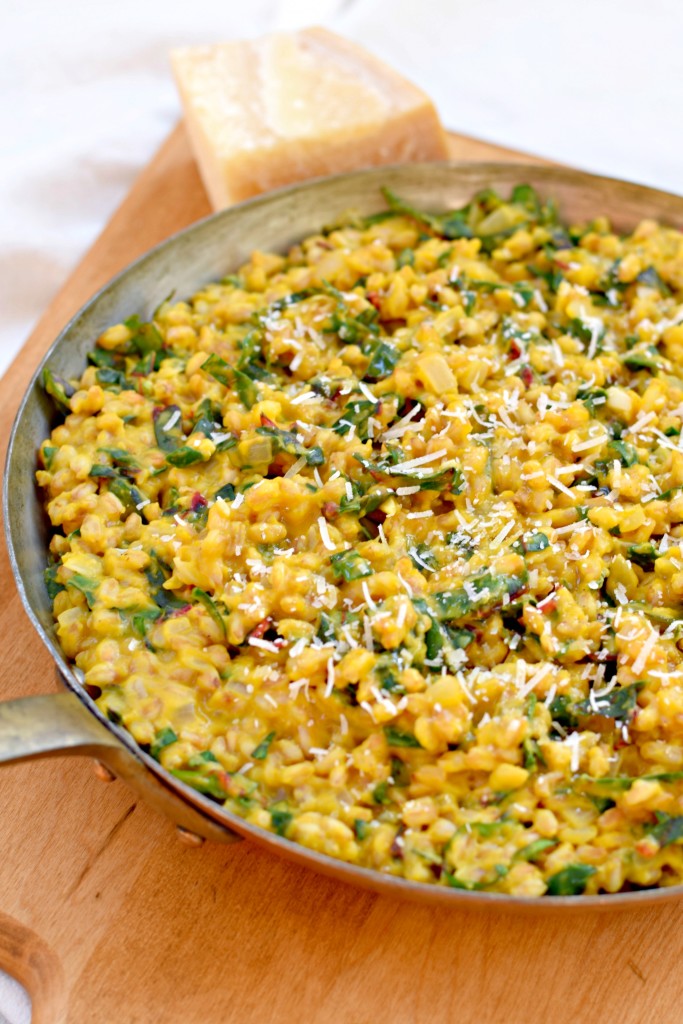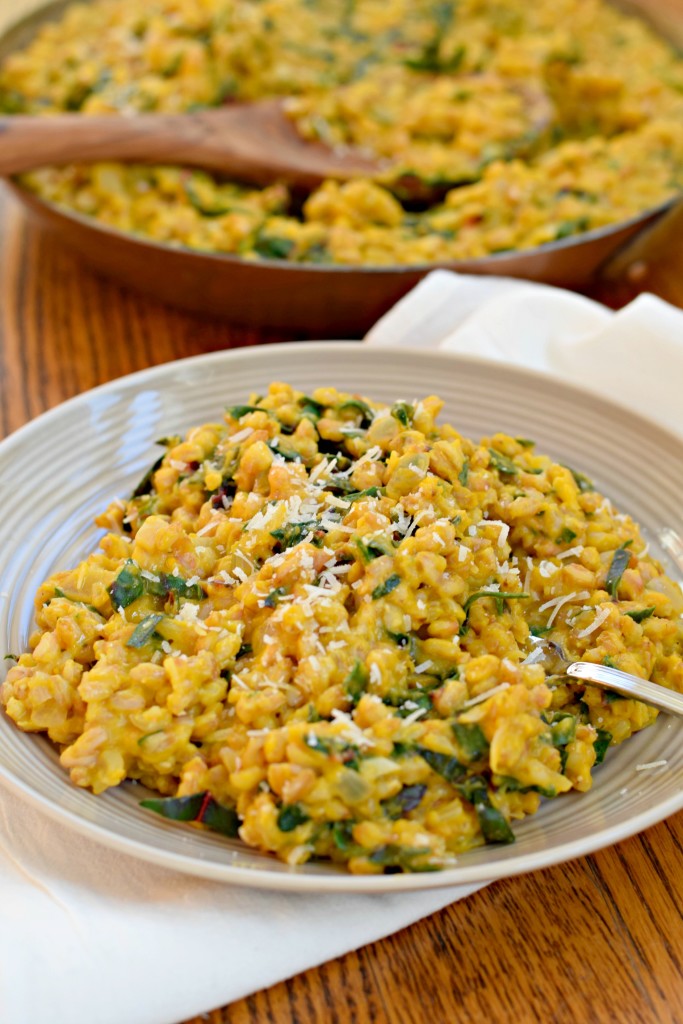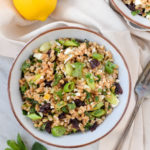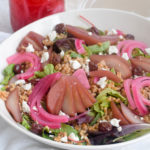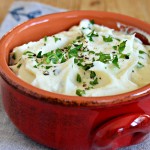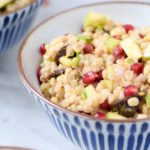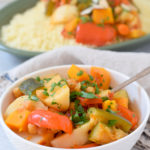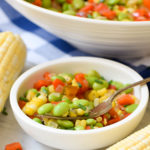I am a little obsessed with farro, an ancient form of wheat that is once again trendy. There is some confusion about what farro is exactly because it sometimes goes by other names, including spelt and einkorn. Grains of farro are about the size and shape of rice, but pale brown in color.
With twice the fiber and protein of modern wheat, farro is exactly the kind of whole grain that we should eat more often. It does not need to be soaked and cooks quickly — especially farro perlato — making it an ideal whole grain for nutritious weeknight meals. And nutritious it is! Farro is a complex carbohydrate with lots of vitamins and minerals, including vitamin B3 which aids in metabolizing carbohydrates, fats and proteins.
If none of this information makes you want to try farro, let me assure you that I am obsessed with it not because of how healthy it is, but because of this ancient grain’s nutty taste and springy, al dente texture. My family knows that if there is farro on a restaurant menu, that is the dish I will order. Yet, farro is not only something that chefs can cook. It is quite easy to prepare at home and works in all kinds of dishes from soup to salads.
Although farro may be new to you, it is easy to find in stores. Village Harvest, which is known for its wide variety of rice products, sells farro and other globally-inspired whole grains. Village Harvest is dedicated to exploring innovative change, whether it’s new ways to help the farmer, or discovering new possibilities in the kitchen, like farro.
Not only is Village Harvest invested in exciting changes in the kitchen, they support communities through social development and sustainability projects. Village Harvest pledges 1% of its profits to support global programs such as building schools, educational programs, and providing clothing and food for children in developing communities. So go buy some extra bags of farro, won’t you?
My favorite way to prepare farro is to cook it like risotto by gradually adding warm broth to the toasted grains until they are tender. The grains stay perfectly toothsome and separate yet the final dish is creamy and deeply comforting, especially on a cold winter night.
To my farro risotto, or farrotto, I add puréed squash and some dark leafy greens, both of which are winter crops, so they are in season right now. The squash adds sweetness and color to which the bitter greens — here Swiss chard — provide a pleasing contrast.
This farrotto recipe is inspired by one in Chef Sean Brock’s award-winning cookbook, Heritage. But his version of farro risotto has lots of steps and is somewhat cheffy. Mine is more streamlined and friendly for home cooks, especially because you can make the squash purée in advance.
Sure, you have to stir the farrotto fairly constantly once you start it, but hey! It gets you out of doing anything else for those 45 minutes. Multi-tasking, be damned! Turn on some music and pour a glass of wine. Ignore the laundry. You have stirring to do. I promise the end result is worth it.
So, be sure to check the Village Harvest product locator to find its natural, unprocessed farro perlato near you. On the next cold, winter night, warm up by making this squash farrotto with Swiss chard for your family! Maybe you will become as obsessed with farro as I am.
Ingredients
- 1 butternut squash
- 3 TB extra-virgin olive oil (plus more for drizzling)
- 1 yellow onion, diced
- 2 cloves garlic, minced
- Pinch red pepper flakes
- 2 quarts chicken broth, vegetable broth or water
- 1 package Village Harvest Farro Perlato
- 2/3 cup dry white wine
- 1 bunch Swiss chard, washed, stems removed and sliced into ribbons
- 1/2 cup grated Parmesan (plus more for garnish)
- Salt and pepper to taste
Instructions
- Preheat oven to 400.
- Peel the squash, remove the seeds and cut into 1-inch pieces.
- Line a baking sheet with foil and toss the squash pieces with 1 TB of the olive oil. Season well with salt and pepper.
- Roast squash until tender, 20-30 minutes.
- Puree squash in a food processor or high-speed blender. Set aside. (May be done in advance.)
- Heat the remaining olive oil in a large, deep skillet or sauté pan.
- Add the onion and sauté over medium heat until translucent, about five minutes.
- Meanwhile, heat the broth or water in a medium saucepan to a gentle simmer.
- Add the garlic to the pan with the onion and sauté for a few additional minutes. Season with salt, pepper and the red pepper flakes.
- Add the farro to the pan with the onion and garlic and toss to coat with the oil. Toast the farro grains until slightly darkened, about five minutes.
- Add the white wine, turn the heat to high and bring to a boil. Turn the heat down to medium and allow the wine to bubble away.
- When the wine is almost evaporated, add one cup of the warm broth or water and stir to combine. Continue stirring until the liquid has almost evaporated and then add a half-cup of liquid.
- Repeat this process, stirring the farro and adding liquid in half-cup increments, until the farro is tender and the liquid almost gone, about 45 minutes.
- When the farro is tender, add the squash puree and stir to combine.
- Add the chopped Swiss chard and heat just until the greens are wilted, about four minutes. (Add additional broth if the farrotto is too thick.)
- Sprinkle on the Parmesan and drizzle with a fruity olive oil. Serve right away.
I was selected for this opportunity as a member of Clever Girls and the content and opinions expressed here are all my own.
